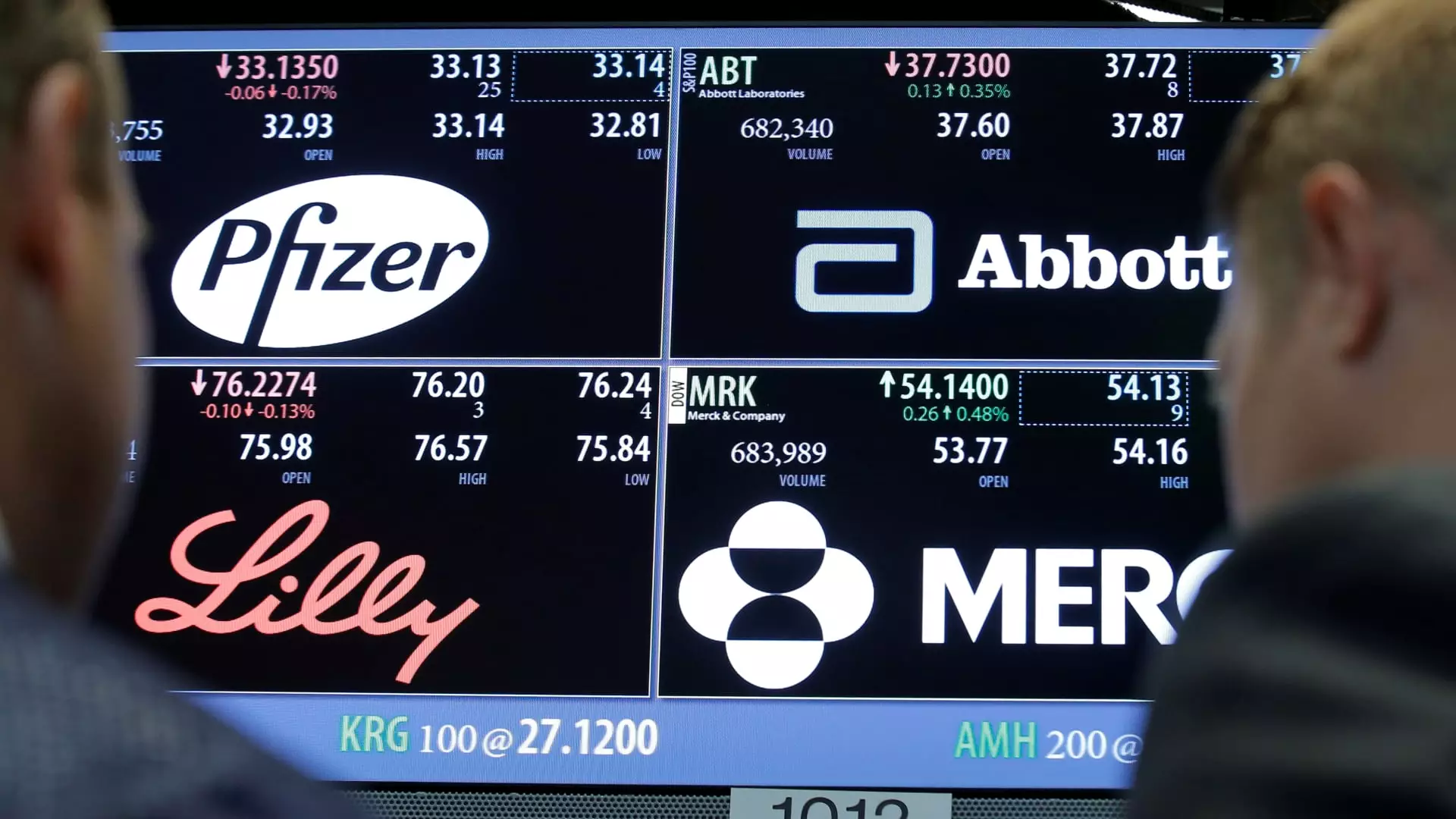In financial discussions, particularly those surrounding equity markets, a recurring inquiry persists: which sectors present viable investment opportunities? Not merely areas that have been overlooked or underestimated but those with solid bases that can realistically outperform major benchmarks like the S&P 500 over the next few years. One sector that stands out amidst such discussions is biopharmaceuticals, spotlighting established giants such as Merck, Pfizer, Bristol Myers Squibb, Amgen, and Biogen. Notably, this analysis notably excludes Eli Lilly and Novo Nordisk, as their recent successes—largely attributed to their groundbreaking GLP-1 obesity treatments—have significantly escalated their market valuations, overshadowing the moderately performing stocks in the broader sector.
The once-dominant market position of these companies appears to have diminished over the past few years, primarily due to concerns over their innovation pipelines, looming patent expirations, and the implications of regulatory price controls. Investors often approach this space with a sense of hesitance, constrained by the prevailing narratives of stagnation and uncertainty.
Yet, within this apparent malaise lies a wealth of opportunity. An in-depth examination reveals that the biopharmaceutical sector boasts remarkable profitability metrics compared to the wider market. The average EBITDA margin for these firms is a robust 38%, significantly outpacing the S&P’s 31%. Furthermore, their average net profit margin rings in at an impressive 24%, dwarfing the 17.2% average for the broader market. These figures underscore the ability of these companies to generate substantial earnings, raising the question: how do we reconcile solid financial health with sluggish market performance?
Valuation is key to understanding this contradiction. The biopharmaceuticals’ average price-to-earnings (P/E) ratio based on 2025 forecasts stands at 12.7, contrasting sharply with the S&P 500’s 20.6. While a low P/E can mislead some investors, it highlights a sector that may be undervalued, especially when analyzed alongside various other financial metrics, such as total enterprise value relative to EBITDA.
One major criticism levied against this sector remains its perceived lack of innovation. Many analysts ponder why the remarkable breakthroughs of the 1990s, which ushered in therapies for conditions like cholesterol, oncology, and depression, seem truant today. The explanation often circles back to the nature of biopharmaceutical research: many believe that the ‘easy’ targets within drug development have been addressed, leaving increasingly complex conditions—such as Alzheimer’s and Parkinson’s—as the next frontier.
Despite the doldrums of innovation, these companies continue to pursue an array of therapeutic candidates targeting diverse disease states. Nevertheless, investor sentiment remains bogged down by the industry’s mixed track record in transforming costly research and development efforts into viable, market-ready solutions.
The Promise of Artificial Intelligence
As discussions unfold about the potential for renewed growth within biopharma, one word is cropping up with increasing frequency: Artificial Intelligence (AI). The integration of AI into drug development represents a paradigm shift that could enhance the efficiency of research endeavors. Today, it typically requires around ten years and billions of dollars to bring a drug from concept to market. AI holds the promise to expedite this complex process, particularly after its noteworthy role in the rapid development of COVID-19 vaccines.
Current drug development practices yield a staggering 90% failure rate for drugs entering human trials, a statistic that has remained stubbornly unchanged over the last few decades. However, employing advanced data-mining strategies and machine learning models may offer a pathway to more successful outcomes. Pfizer’s recent employment of AI in crafting its COVID-19 vaccine illustrates this potential, suggesting that machine intelligence might bridge the gap between current methodologies and future successes.
Scientific advancements, such as projects like AlphaFold, are paving the way by predicting protein structures efficiently, which remarkably enhances the drug-design process. Additionally, AI’s ability to identify suitable clinical trial candidates through analyzing cellular compositions could revolutionize the notoriously challenging recruitment phase of drug development.
While the biopharmaceutical sector is currently mired in challenges related to innovation and market perception, a closer examination unveils promising financial metrics that cannot be ignored. With powerful tools like AI entering the fray, the landscape of drug development and market potential may be radically transformed.
As seasoned investors strategize their portfolios, incorporating a carefully selected range of biopharmaceutical equities may not only offer value but also the tantalizing prospect of gaining exposure to innovations that could redefine medicine in the coming years. Embracing these dynamics may well yield fruit, transforming patient outcomes and generating solid returns for discerning investors willing to look beyond the status quo.

